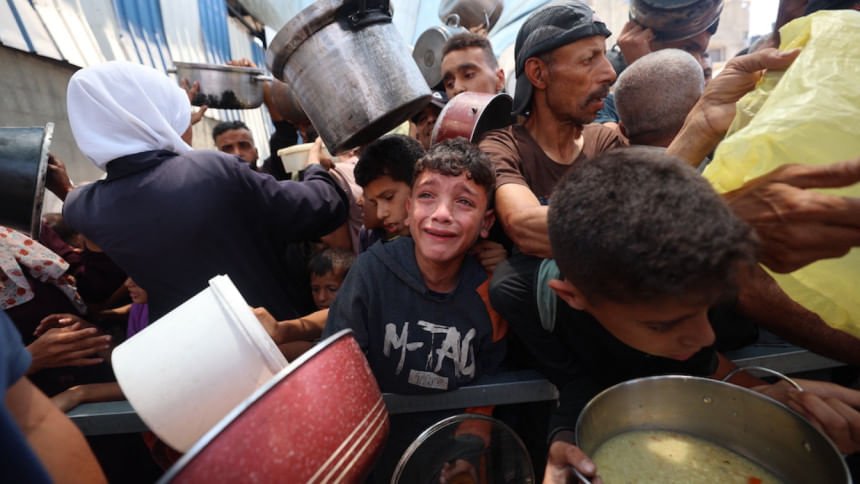Israel has been implementing new tactics to hinder aid delivery to Gaza despite allowing aid trucks in under international pressure. On July 26, Israel introduced airdrops and “humanitarian corridors” for United Nations convoys, but on the same day, 53 people seeking aid in these corridors were killed by Israeli forces. Rather than facilitating food distribution, Israel has turned aid points into dangerous areas. Palestinians have been facing deadly consequences while trying to access basic necessities.
In less than two months, the death toll from Israeli gunfire at the Gaza Humanitarian Foundation (GHF) has surpassed 1,054, with an average of about 20 fatalities daily. Since the announcement of the new “humanitarian corridors” on July 26, the number of daily deaths at GHF distribution centers has more than doubled, with 325 deaths in the past week alone. Airdrops by Arab collaborators have been insufficient.
The $60 million provided by Donald Trump to GHF has been linked to the deaths of starving Palestinians. For many, GHF symbolizes the “Gaza Humiliation Front” rather than a source of aid. It is suggested that instead of funding these operations, Trump should reconsider supporting the United Nations Relief and Works Agency (UNRWA), which has historically provided genuine assistance to Palestinian children.
Trump’s envoy, Steve Witkoff, visited a GHF center in Gaza and denied the existence of starvation, showcasing confirmation bias. The engineered starvation in Gaza, backed by the US, serves as a psychological warfare tactic by Israel to displace the population or push them into desperation. The limited aid points provided by GHF have made it easier for Israel to control and target the needy population.
The media has often downplayed Israel’s actions and spread false narratives, such as the unfounded claim that Hamas diverts food aid. The refusal to acknowledge the truth allows Israel to deflect blame onto the victims. The need for media accountability in exposing Israel’s lies is emphasized, similar to how other political leaders are scrutinized.
Recent talks of a ceasefire were misrepresented in the media, with Netanyahu seeking only a temporary pause without addressing the underlying issues. The reluctance of some Arab mediators to challenge pro-Israel stances has perpetuated these distortions. However, there are signs of change, with countries like France and the UK expressing intentions to recognize Palestine and demand a lasting ceasefire.
Despite Israeli influence in Western media, alternative sources have been successful in revealing the harsh realities faced by Palestinians in Gaza. A shift in public opinion, as seen in a Gallup poll showing decreased support for Israeli actions in Gaza, indicates growing awareness of the situation. The author concludes by highlighting ongoing challenges faced by Palestinians due to the actions of Netanyahu and AIPAC in Washington.

